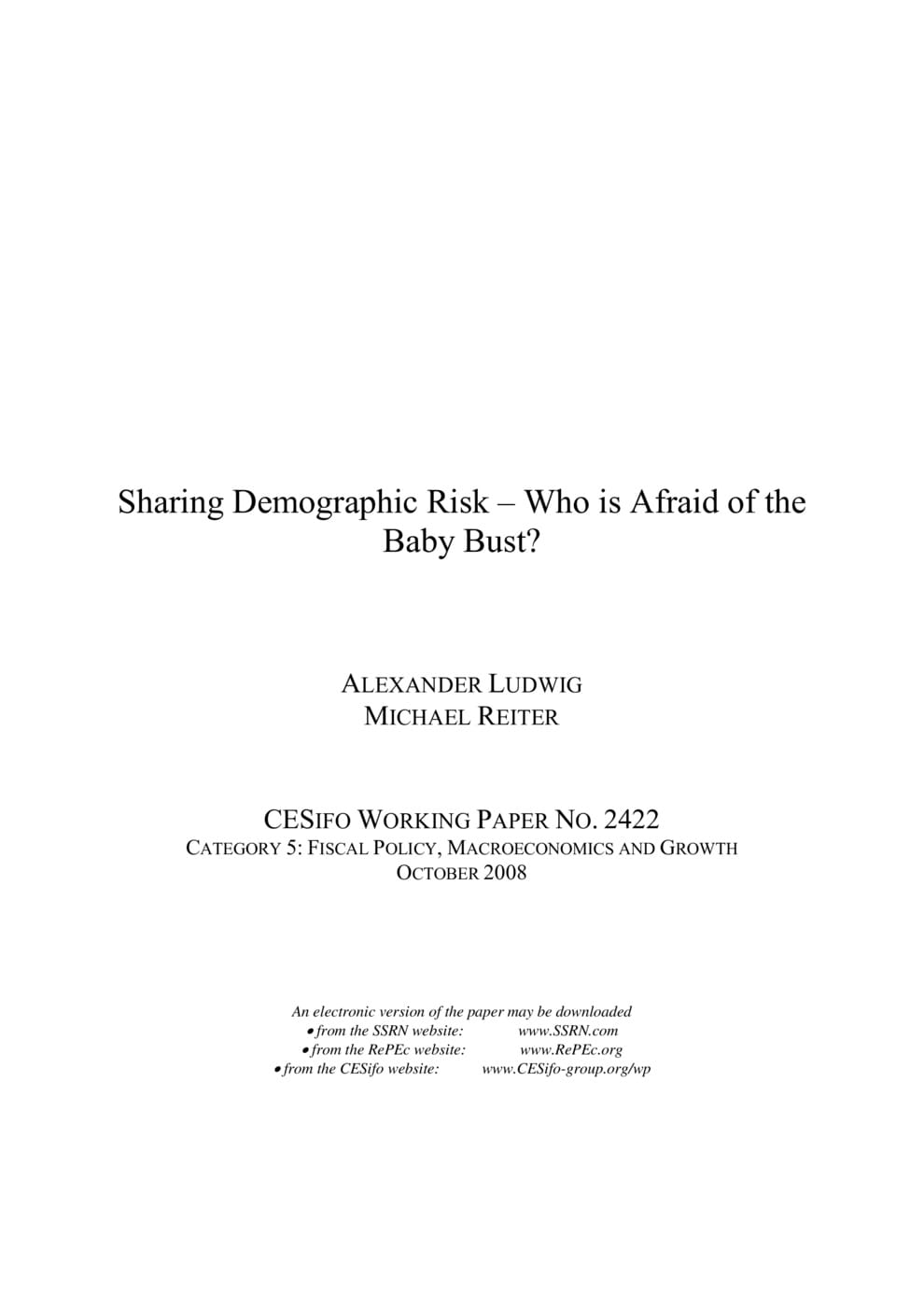Sharing Demographic Risk – Who is Afraid of the Baby Bust?
CESifo, Munich, 2008
CESifo Working Paper No. 2422

We model the optimal reaction of a public PAYG pension system to demographic shocks. We compare the ex-ante first best and second best solution of a Ramsey planner with full commitment to the outcome under simple third best rules that mimic the pension systems observed in the real world. The model, in particular the pension system, is calibrated to the German economy. The objective of the social planner is calibrated such that the size of the German pension system was optimal under the economic and demographic conditions of the 1960s. We find that the German system comes relatively close to the second-best solution, especially when labor market distortions are correctly modelled. Furthermore, the German system and a constant contribution rate lead to a lower variability of lifetime utility than does the second best policy. The recent baby-boom/baby-bust cycle leads to welfare losses of about 5% of lifetime consumption for some cohorts. We argue that it is crucial for these results to model correctly the labor market distortions arising from the pension system.
Fiscal Policy, Macroeconomics and Growth